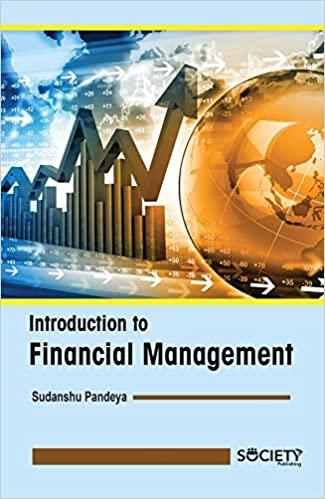Question
Modigliani & Miller show that dividend policy can also be considered irrelevant. Yet, unexpected increases in dividends are often closely followed by price increases, why?
Modigliani & Miller show that dividend policy can also be considered irrelevant. Yet, unexpected increases in dividends are often closely followed by price increases, why?
To clarify, when a firm pays a dividend the stock price should drop by the amount of the dividend on the ex-dividend date. Let's say a firm has 5 stockholders, each holding 1 share. The firm owns $2,000 in cash and $3,000 in other assets. So the firm is worth $5,000 (it owes no debt). Each stockholder's claim is worth:
$5,000/5 = $1000.
Now the firm declares a dividend of $100/share. They must pay out a total of: $100 x 5shares = $500. So after the dividend is paid the firm now has $1,500 in cash and $3,000 in other assets, for a total of $4,500. Dividing this by 5 stockholders, we find that each stockholders claim is $900. The same as if we take $1,000 less $100 dividend to get $900. The stockholder hasn't lost anything, he still has $1,000 in value, just $900 in the firm and $100 in cash now.
But what we actually often see in practice is:
Lets say the firm was expected to pay a $100/share dividend, but instead pays a dividend of $110. Like the example above, we would expect to see the stockholder's value fall to $890 ($1,000 - $110 = $890). Again, the stockholder still has $1,000; $890 in the firm and $110 in cash. In practice though, we see that instead of the stock dropping to $890, it falls to say, only $895. Thus the stockholder's value is now; $110 + $895 = $1,005.
Why did they gain $5 in value, just by issuing the dividend?
Step by Step Solution
There are 3 Steps involved in it
Step: 1

Get Instant Access to Expert-Tailored Solutions
See step-by-step solutions with expert insights and AI powered tools for academic success
Step: 2

Step: 3

Ace Your Homework with AI
Get the answers you need in no time with our AI-driven, step-by-step assistance
Get Started


